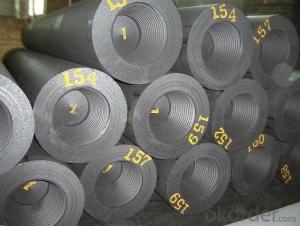When we talk about the environmental impact of graphite electrode production, we’re diving into a world of complex processes and intricate details. It’s a journey that starts with the raw materials and ends with a product that’s vital for industries like steelmaking. But, let’s face it, this journey isn’t always a walk in the park for our planet.
Graphite electrodes are essentially non-consumable tools used in electric arc furnaces for smelting operations. They play a crucial role in the production of steel, which is a cornerstone of modern infrastructure. But, the path to these electrodes is paved with environmental concerns that we can’t ignore.
The production of graphite electrodes begins with the extraction of raw materials, primarily calcined petroleum coke and needle coke. The extraction process itself can be a double-edged sword. On one hand, it provides the base for a versatile product. On the other hand, it can lead to deforestation, habitat destruction, and soil erosion if not managed properly.
Once we’ve got our raw materials, the fun really begins – or should I say, the chemical fun. The raw materials undergo a series of processes including crushing, mixing, pressing, and baking. Each of these steps requires energy, and that’s where things can get a little smoky. The energy consumption in this phase contributes to greenhouse gas emissions, which is not great news for our atmosphere.
But wait, there’s more. The production process also involves the use of binders and pitch, which are known to release volatile organic compounds (VOCs) during heating. These VOCs are not only harmful to the environment but also to the health of workers involved in the production process.
Now, let’s talk about the water usage in graphite electrode manufacturing. Water is used in various stages, from mixing to cooling. The wastewater generated can contain harmful chemicals and heavy metals, which, if not treated properly, can pollute water sources and disrupt aquatic ecosystems.
The good news is that the industry is not blind to these issues. Many manufacturers are adopting cleaner production methods, investing in energy-efficient technologies, and implementing stricter waste management protocols. They’re also exploring the use of alternative materials to reduce their environmental footprint.
However, the road to sustainability is a marathon, not a sprint. It requires continuous effort, innovation, and a commitment to change. The environmental impact of graphite electrode production is a challenge that we must face head-on, with open eyes and a determined heart.
In conclusion, while graphite electrodes are essential for various industries, their production comes with a significant environmental cost. It’s a cost that we can’t afford to ignore. As we move forward, it’s crucial that we strike a balance between industrial needs and environmental preservation. It’s a delicate dance, but one that we must learn to perform with grace and responsibility.

